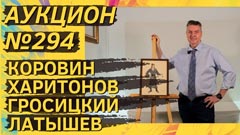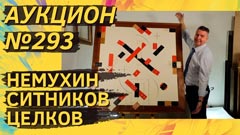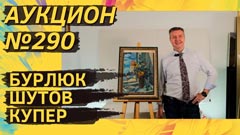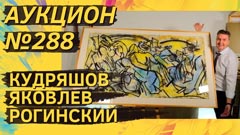
There are basic criteria for investment security — authenticity and name. But why, then, when choosing a picture, experienced buyers ask the year and pay close attention to the plot? What difference does it make to them?
And there is a difference. Yes, and what!
Let's look at some examples.
Imagine that there are two pictures of the nonconformist artist Dmitry Krasnopevtsev. The size is the same, about 30 × 40 cm. Both hardboard, oil. The difference in time of creation is about three years. In this case, one costs 150,000 rubles, and the second 1,500,000 rubles. The difference in price is 10 times. Why suddenly?
And the chest opens simply. The first picture is an expressionist figurative painting (portrait) done in the late 1950s. And the second one is a metaphysical still life of 1962, when Krasnopevtsev's unique, especially recognizable style was already fully formed. And it is for the still lifes of the 1960s — early 1990s that most collectors of unofficial post-war art are hunting. And Krasnopevtsev's expressionism is interesting to those who already have 4–5 exemplary metaphysical still lifes. This is already a connoisseur topic for drawing up a retrospective series.
Another example. There are two paintings by Anatoly Zverev. Both are large, under a meter. Both are oil on cardboard. Both were created in the early 1980s. But one has a portrait of a woman. And the second shows Don Quixote. Why will the first one cost around 400,000 rubles, and the second 1,600,000? Yes, it's about the plot. The first is a beautiful, masterful, but utilitarian thing, a portrait of a stranger, of which there are many. And the second is a “knight of a sad image”, a philosophical thing, rare, the embodiment of the life credo of the restless Russian virtuoso.
Now is it clearer how it works?
The work of every famous artist is not monolithic. The first few years for a young author are spent looking for himself, his own special style. One day the artist finds it. One at 30, another at 45 or even later. Then comes the period of dawn, when the artist full of energy is ready to move mountains. The peak of creative energy is followed by ups and downs, years of maturity, a creative renaissance, then the later period. This often happens, but there is no clear scheme. It is wrong to measure the valuable period from age. There will be many mistakes. For example, when you hear that the “late Zverev” of the 1980s is much weaker than the Zverev at the turn of the 1950s — 1960s, this is a rough generalization, very inaccurate. It happens this way and that. In the work of late Zverev, one can often find inspired masterpieces, and in the early inspired period, on the contrary, one can find a lot of frankly “passing” things. And remember Aron Bukh? That Bukh, whom we value and love today, appeared at the age of 62. Not at 30 or 40, but already retired. The artist literally burned his old, rather dull socialist realist figurative, got rid of the past and was reborn again as a bright distinctive expressionist.
How to define a valuable period? Through books, albums, exhibitions. It's not as difficult as it sounds. A careful look at creativity in retrospect — and soon you will see the moment from which an innovative element appeared in the artist's work, from which he became an original recognizable master. It is innovation, the introduction of new things into art, that is the criterion of a particularly valuable period. Often. But not only that. “Energy”, “power of painting”, “charge” — these factors are not easy to formalize, but easy to feel.
With the main theme and the “exclusive” plot, the matter is more complicated. Although you can figure it out too. This is not a Newton binomial. Artists have images, plots, formats and characters that the general public and collectors are especially looking forward to. Those things that everyone loves and wants. For example, for Vladimir Nemukhin, “Super Elephant” remains a particularly popular subject. Collectors simply tried to persuade the artist to make them their own version. And it would seem that Nemukhin created a lot of them. But they are in short supply on the market. And to this day, buyers are hunting for this composition as an exclusive one, and the prices for “Super Elephant” are noticeably higher than for other plots by Nemukhin.
Vladimir Yakovlev has especially valuable “cats with a bird”, the rarest “portraits of the wind”, “sick” exotic subjects and, of course, flowers. For Rabin, herrings, bottles, barracks of the Lianozovo period and the later, pre-emigration period are most highly valued. In turn, works written in France with French inscriptions are cheaper. Although in the Parisian period, the artist had many powerful works. And so take anyone. For Vechtomov, collectors prefer “alien” landscapes and abstractions. Lucy Voronova has “black” flowers. For Zverev, in addition to the previously mentioned Don Quixote, collectors ask for landscapes with pines, paintings with animals, or are looking for atypical subjects. Andrey Grositsky is especially appreciated for the “poetry of things” — relief still lifes with faucets, shovels and other objects. Boris Sveshnikov has complex “point” divisional phantasmagorias. Collectors ask Konstantin Batynkov for the Kremlin and the clowns. Dmitry Plavinsky has a turtle-Moscow and rhinos. This is not to say that everything else in their work is less interesting. But it can be clearly seen from the ground that these are high-demand plots, for which people are willing to pay much more.
The main theme from the author of the first names, a well-known plot, and belonging to a valuable period can increase the market value of a work several times. Sometimes even ten times or more. Yes, such things are more expensive than others, which seem to be very similar. Almost “the same”. And for a person not in the subject, such a range of prices looks strange and unconvincing. But, believe me: despite the high cost, it is with such high-quality works that the investor will be the safest. When the time comes for resale, at least you won't have to worry about the liquidity of the paintings. Masterpieces, “exclusive”, things of the highest quality, even in the current crisis times, quickly find their buyer. But what can I say: for the right to own some paintings, real correspondence battles are unfolding.
So let's remember a simple and useful recipe: authenticity — name — valuable period — a demanded plot. You can shake and mix them. But for success you need all the ingredients at once.
Vladimir Bogdanov, specialist of ArtSale.info auction
- Log in to post comments










